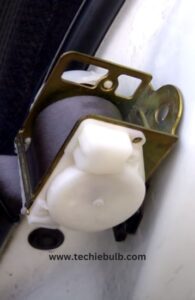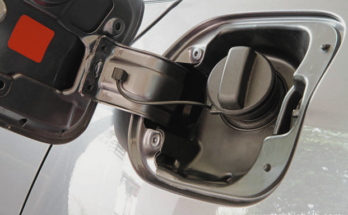A jammed seat belt retractor, often a result of accumulated debris, mechanical wear, or twisted webbing, manifests as a disruption in the smooth retraction and extension of the seat belt.
This phenomenon not only introduces inconvenience but raises concerns about the belt’s ability to fulfill its primary duty during crucial moments. Understanding the causes and solutions becomes imperative, empowering vehicle owners to navigate through the intricacies of this enigma.
Ensuring the smooth operation of seat belt retractors is pivotal for the safety of vehicle occupants. However, encountering a jammed seat belt retractor can be both inconvenient and concerning. In this detailed guide, we will unravel the common causes behind jamming seat belt retractors and provide effective solutions on how to fix them.
Seat Belt Stop Retract? Join us on this exploration as we delve into the common causes, identify unmistakable signs, and offer practical solutions to liberate seat belts from the clutches of jammed retractors.
What is a Seat Belt Retractor?
 Seat belt retractors are integral components of vehicle safety systems designed to secure passengers in their seats during vehicle movement. Their primary function is to manage and control the length of the seat belt webbing, ensuring a snug yet comfortable fit for occupants. These retractors play a crucial role in preventing excessive movement during sudden stops, collisions, or deceleration, thus enhancing overall safety.
Seat belt retractors are integral components of vehicle safety systems designed to secure passengers in their seats during vehicle movement. Their primary function is to manage and control the length of the seat belt webbing, ensuring a snug yet comfortable fit for occupants. These retractors play a crucial role in preventing excessive movement during sudden stops, collisions, or deceleration, thus enhancing overall safety.
Tension and inertia are the driving forces behind its functionality. When a driver or passenger fastens their seat belt, the webbing engages with the retractor’s spool, creating a secure connection. In the event of a sudden stop or collision, the retractor’s locking mechanism activates, preventing the webbing from extending further and holding the occupant firmly in place.
Modern seat belt retractors go beyond the basics, incorporating advanced features that enhance safety and convenience. Pretensioners, for instance, retract the seat belt webbing in the event of a collision, reducing slack and bringing occupants firmly into their seats before the full force of the impact is felt.
Additionally, sensor technology has made its way into retractors, assessing factors like collision severity or occupant size and position to tailor the retractor’s response for optimal protection.
Seat belt retractors typically operate in two primary modes, each serving a distinct purpose in enhancing occupant safety within a vehicle. These modes are Emergency Locking Retractors (ELRs) and Automatic Locking Retractors (ALRs). Here’s a detailed exploration of each mode:
What is an Emergency Locking Retractor? (ELRs):
ELRs are designed to respond swiftly to sudden stops, rapid deceleration, or collisions by locking the seat belt webbing in place. The locking mechanism engages when the system detects forces associated with abrupt changes in the vehicle’s motion.
ELRs play a crucial role in restraining occupants during unexpected events, preventing excessive forward movement within the vehicle. This mode ensures that the seat belt webbing remains taut and securely restrains the occupant, enhancing overall safety.
ELRs dynamically respond to the specific forces experienced by the vehicle, providing an immediate and effective locking mechanism. The sensitivity of ELRs to these forces ensures a rapid and adaptive response, contributing to occupant protection.
In some ELR systems, users have the option for manual control. Users can manually activate the locking mechanism by pulling the seat belt webbing tightly. This feature offers users flexibility, allowing them to engage the locking mechanism when securing items like car seats or ensuring a snug fit.
What is an Automatically Locking Retractor? (ALRs):
ALRs automatically lock the seat belt webbing when it is pulled tightly, providing a secure and firm restraint. The locking mechanism engages when the tension in the seat belt webbing reaches a predetermined level, ensuring a snug fit.
ALRs offer versatility by allowing users to manually adjust the seat belt tension to achieve a tight fit. This mode is particularly useful for securing car seats and other items that require a stable and non-slack connection.
ALRs contribute to occupant safety by preventing excessive movement during sudden stops or collisions. The automatic locking feature ensures that the seat belt remains tight, minimizing the potential for occupants to be thrown forward.
ALRs often feature adjustable retraction, allowing users to manually release the locked seat belt when needed. This adjustable feature adds convenience, providing users with flexibility in managing the seat belt tension based on specific requirements.
These two modes of seat belt retractors, ELRs and ALRs, complement each other to create a comprehensive restraint system. While ELRs respond dynamically to sudden vehicle movements, securing occupants during unexpected events, ALRs automatically lock the seat belt when pulled tightly, ensuring a snug fit for various applications, including the installation of child safety seats. Together, these modes contribute to the overall safety and effectiveness of vehicle seat belt systems.
Causes of Jamming Seat Belt Retractors
Accumulation of Debris-A prevalent culprit behind jamming seat belt retractors is the accumulation of debris within the retractor mechanism. Dust, dirt, and other particles can infiltrate the intricate components, impeding the retraction and extension of the seat belt.
Twisted or Folded Webbing-Twisted or folded seat belt webbing can disrupt its movement within the retractor, leading to a jam. This often occurs during hasty retractions or if the belt becomes entangled with objects inside the vehicle.
Mechanical Wear and Tear-Over time, the internal components of the retractor mechanism may experience wear and tear. This can result in inefficiencies, causing the seat belt to jam during retraction or extension.
Identifying a Jammed Seat Belt Retractor
Auditory Clues-Unusual sounds during the retraction or extension of the seat belt can be an initial indication of a jammed retractor. Clicking, grinding, or sticking noises warrant attention to the retractor mechanism.
Visual Inspection-Physically inspect the seat belt for twists, folds, or visible debris. Observing the belt’s movement during retraction provides visual cues to identify irregularities.
Tension Assessment-Pull the seat belt out and assess for tension irregularities. Resistance, inconsistent retraction, or rough extension are telltale signs of a potential jam in the retractor mechanism.
Fixing Jammed Seat Belt Retractors: Effective Solutions
Gentle Pulling and Inspection-If twists or folds are noticed in the seat belt webbing, gently pull it out entirely and inspect for abnormalities. Slowly feed the belt back in, ensuring it aligns properly to prevent future complications.
Compressed Air Cleaning-To address debris accumulation, use compressed air to blow out dust and particles from the retractor mechanism. This straightforward method helps eliminate obstructions and restore smooth functionality.
Lubrication for Friction Reduction-Applying a silicone-based lubricant to the seat belt webbing and retractor mechanism reduces friction, enhancing overall performance. This solution proves beneficial for addressing issues arising from a faulty retractor mechanism.
Seek Professional Assistance-Persistent seat belt retractor issues may necessitate professional inspection. Qualified technicians can conduct a thorough assessment, identify underlying problems, and offer necessary repairs or replacements for the retractor mechanism.
Preventive measures against future Jams
Regular Maintenance Checks-Implementing a routine maintenance schedule is crucial for preventing seat belt retractor jams. Regularly inspect and clean the components to ensure optimal function and longevity.
Mindful Seat Belt Operation-Advise passengers against rapid or forceful seat belt retractions, as this can contribute to twists and folds. Promoting gentle handling minimizes the risk of complications.
Conclusion
Understanding the causes of jamming seat belt retractors equips vehicle owners with the knowledge to implement effective solutions. By promptly addressing issues and adopting preventive measures, the reliability and functionality of seat belt retractors can be maintained, contributing to overall road safety.




